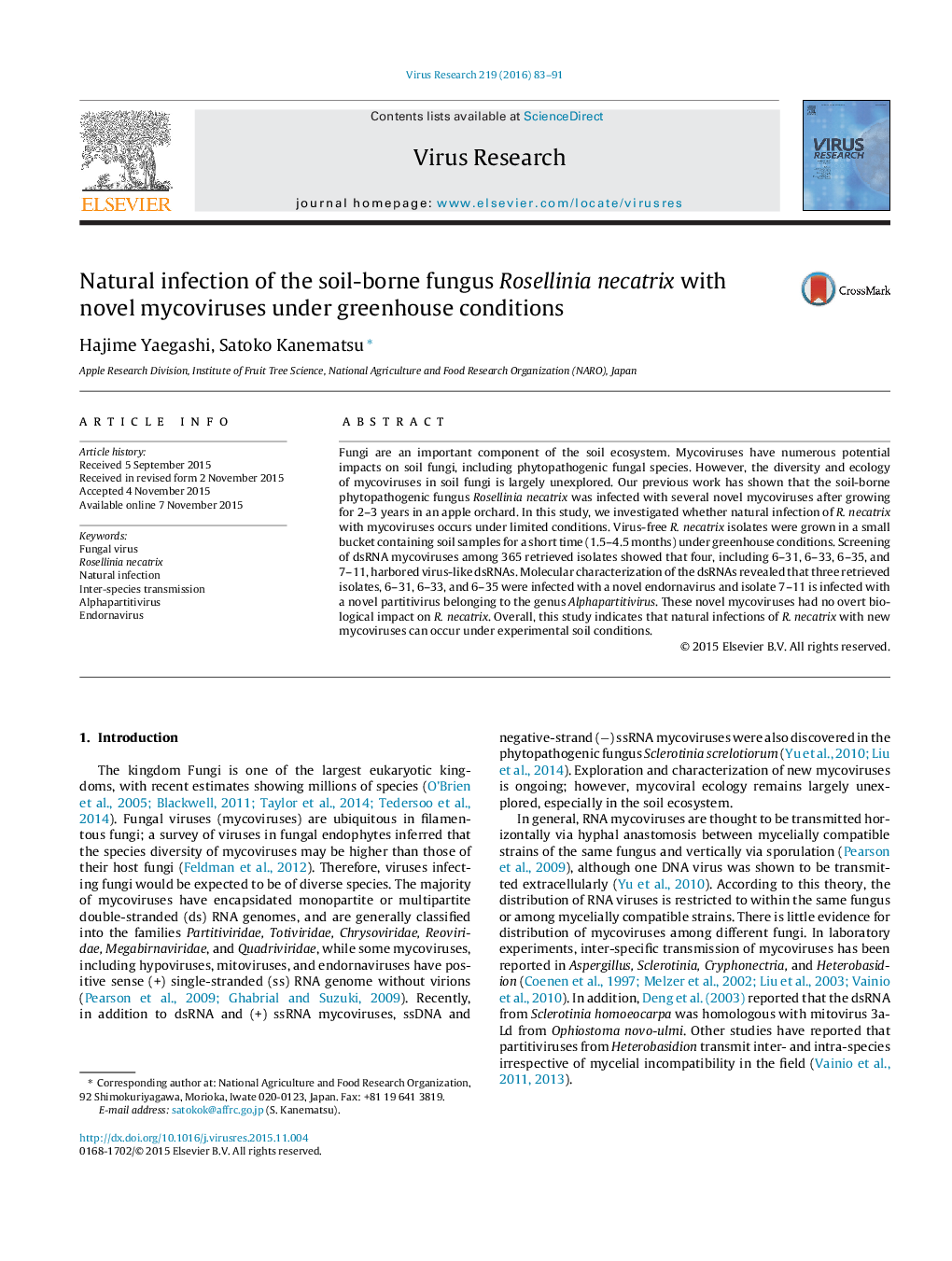| Article ID | Journal | Published Year | Pages | File Type |
|---|---|---|---|---|
| 3427881 | Virus Research | 2016 | 9 Pages |
•Appearance of mycovirus in R. necatrix was tested under limited conditions.•Viral-like dsRNAs appeared in isolates retrieved from two soil samples.•We identified a novel endornavirus (RnEV1) and a novel partitivirus (RnPV7).•Both RnEV1 and RnPV7 had no overt effect on R. necatrix.
Fungi are an important component of the soil ecosystem. Mycoviruses have numerous potential impacts on soil fungi, including phytopathogenic fungal species. However, the diversity and ecology of mycoviruses in soil fungi is largely unexplored. Our previous work has shown that the soil-borne phytopathogenic fungus Rosellinia necatrix was infected with several novel mycoviruses after growing for 2–3 years in an apple orchard. In this study, we investigated whether natural infection of R. necatrix with mycoviruses occurs under limited conditions. Virus-free R. necatrix isolates were grown in a small bucket containing soil samples for a short time (1.5–4.5 months) under greenhouse conditions. Screening of dsRNA mycoviruses among 365 retrieved isolates showed that four, including 6–31, 6–33, 6–35, and 7–11, harbored virus-like dsRNAs. Molecular characterization of the dsRNAs revealed that three retrieved isolates, 6–31, 6–33, and 6–35 were infected with a novel endornavirus and isolate 7–11 is infected with a novel partitivirus belonging to the genus Alphapartitivirus. These novel mycoviruses had no overt biological impact on R. necatrix. Overall, this study indicates that natural infections of R. necatrix with new mycoviruses can occur under experimental soil conditions.
